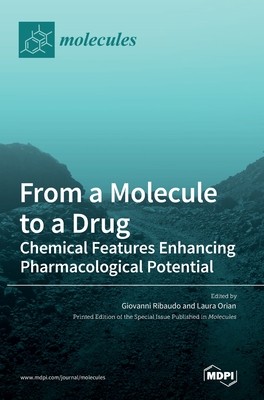
- We will send in 10–14 business days.
- Publisher: MDPI AG
- ISBN-10: 3036547533
- ISBN-13: 9783036547534
- Format: 17 x 24.4 x 1.9 cm, hardcover
- Language: English
- SAVE -10% with code: EXTRA
From a Molecule to a Drug (e-book) (used book) | bookbook.eu
Reviews
Description
This book collects contributions published in the Special Issue "From a Molecule to a Drug: Chemical Features Enhancing Pharmacological Potential" and dealing with successful stories of drug improvement or design using classic protocols, quantum mechanical mechanistic investigation, or hybrid approaches such as QM/MM or QM/ML (machine learning). In the last two decades, computer-aided modeling has strongly supported scientists' intuition to design functional molecules. High-throughput screening protocols, mainly based on classical mechanics' atomistic potentials, are largely employed in biology and medicinal chemistry studies with the aim of simulating drug-likeness and bioactivity in terms of efficient binding to the target receptors. The advantages of this approach are quick outcomes, the possibility of repurposing commercially available drugs, consolidated protocols, and the availability of large databases. On the other hand, these studies do not intrinsically provide reactivity information, which requires quantum mechanical methodologies that are only applicable to significantly smaller and simplified systems at present. These latter studies focus on the drug itself, considering the chemical properties related to its structural features and motifs. Overall, such simulations provide necessary insights for a better understanding of the chemistry principles that rule the diseases at the molecular level, as well as possible mechanisms for restoring the physiological equilibrium.
EXTRA 10 % discount with code: EXTRA
The promotion ends in 5d.00:41:48
The discount code is valid when purchasing from 10 €. Discounts do not stack.
- Publisher: MDPI AG
- ISBN-10: 3036547533
- ISBN-13: 9783036547534
- Format: 17 x 24.4 x 1.9 cm, hardcover
- Language: English English
This book collects contributions published in the Special Issue "From a Molecule to a Drug: Chemical Features Enhancing Pharmacological Potential" and dealing with successful stories of drug improvement or design using classic protocols, quantum mechanical mechanistic investigation, or hybrid approaches such as QM/MM or QM/ML (machine learning). In the last two decades, computer-aided modeling has strongly supported scientists' intuition to design functional molecules. High-throughput screening protocols, mainly based on classical mechanics' atomistic potentials, are largely employed in biology and medicinal chemistry studies with the aim of simulating drug-likeness and bioactivity in terms of efficient binding to the target receptors. The advantages of this approach are quick outcomes, the possibility of repurposing commercially available drugs, consolidated protocols, and the availability of large databases. On the other hand, these studies do not intrinsically provide reactivity information, which requires quantum mechanical methodologies that are only applicable to significantly smaller and simplified systems at present. These latter studies focus on the drug itself, considering the chemical properties related to its structural features and motifs. Overall, such simulations provide necessary insights for a better understanding of the chemistry principles that rule the diseases at the molecular level, as well as possible mechanisms for restoring the physiological equilibrium.


Reviews